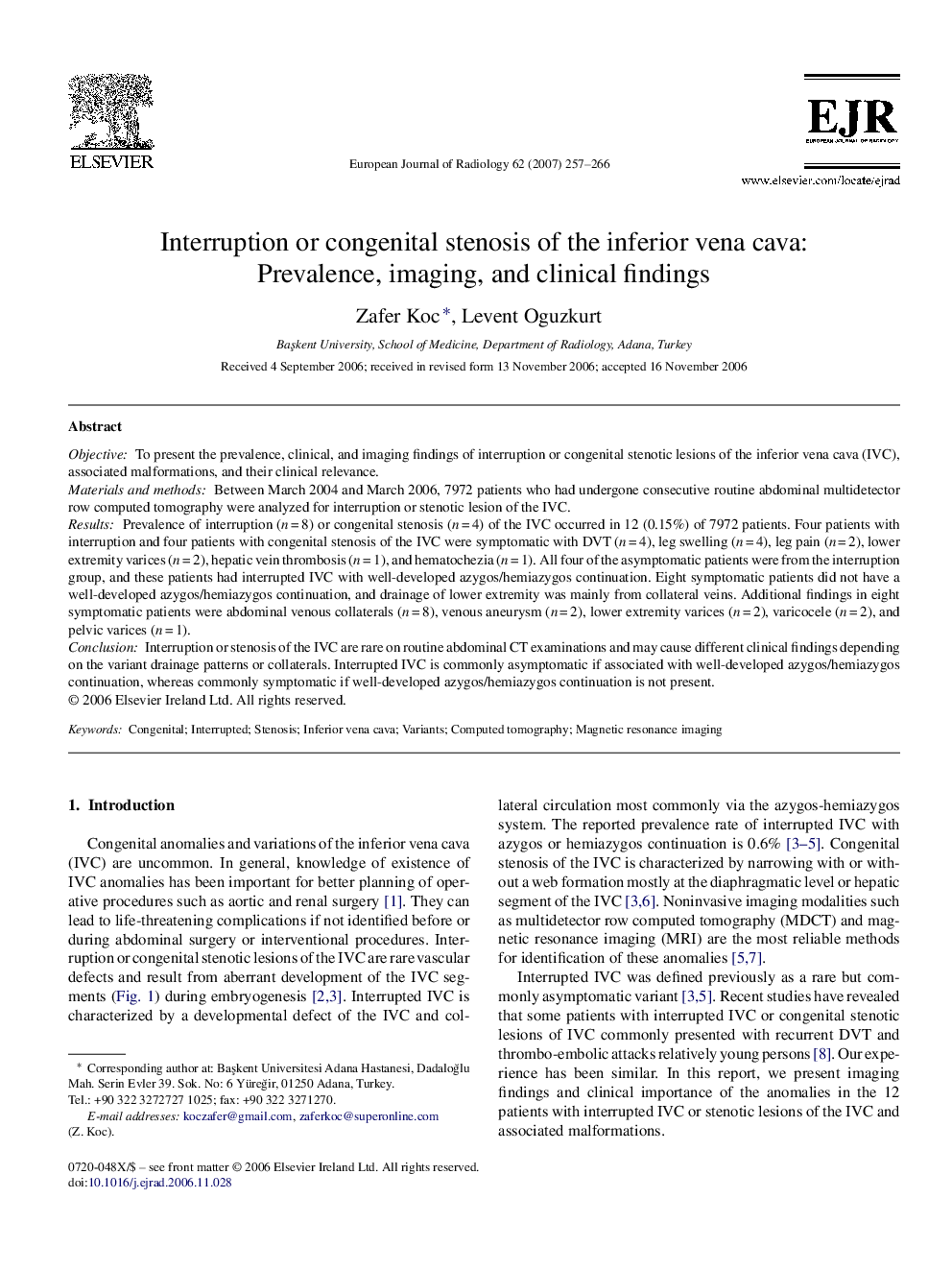| Article ID | Journal | Published Year | Pages | File Type |
|---|---|---|---|---|
| 4228404 | European Journal of Radiology | 2007 | 10 Pages |
ObjectiveTo present the prevalence, clinical, and imaging findings of interruption or congenital stenotic lesions of the inferior vena cava (IVC), associated malformations, and their clinical relevance.Materials and methodsBetween March 2004 and March 2006, 7972 patients who had undergone consecutive routine abdominal multidetector row computed tomography were analyzed for interruption or stenotic lesion of the IVC.ResultsPrevalence of interruption (n = 8) or congenital stenosis (n = 4) of the IVC occurred in 12 (0.15%) of 7972 patients. Four patients with interruption and four patients with congenital stenosis of the IVC were symptomatic with DVT (n = 4), leg swelling (n = 4), leg pain (n = 2), lower extremity varices (n = 2), hepatic vein thrombosis (n = 1), and hematochezia (n = 1). All four of the asymptomatic patients were from the interruption group, and these patients had interrupted IVC with well-developed azygos/hemiazygos continuation. Eight symptomatic patients did not have a well-developed azygos/hemiazygos continuation, and drainage of lower extremity was mainly from collateral veins. Additional findings in eight symptomatic patients were abdominal venous collaterals (n = 8), venous aneurysm (n = 2), lower extremity varices (n = 2), varicocele (n = 2), and pelvic varices (n = 1).ConclusionInterruption or stenosis of the IVC are rare on routine abdominal CT examinations and may cause different clinical findings depending on the variant drainage patterns or collaterals. Interrupted IVC is commonly asymptomatic if associated with well-developed azygos/hemiazygos continuation, whereas commonly symptomatic if well-developed azygos/hemiazygos continuation is not present.
